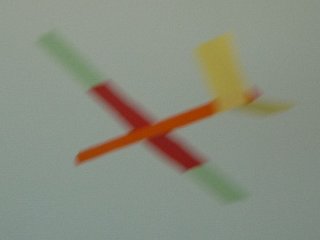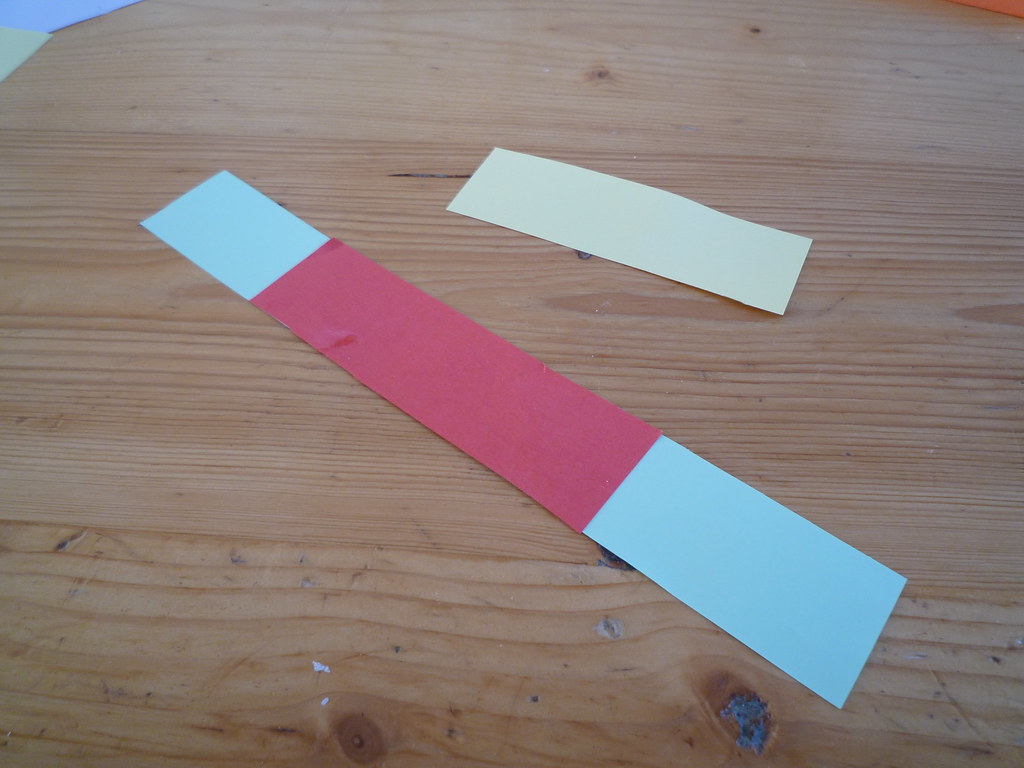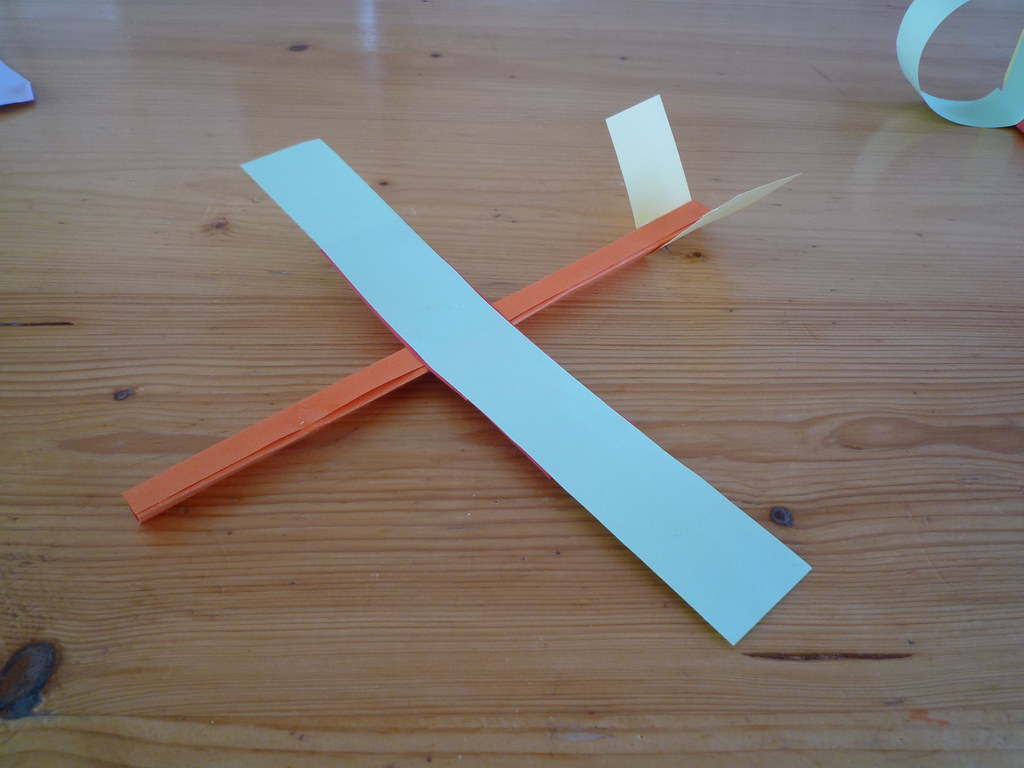 This is real simple and every bit as fast to make as the paper loop plane, and the great part about it is that the wide surfaces of the triangular fuselage mean you don't have to make any special glue tabs to attach the wings and tail.
This is real simple and every bit as fast to make as the paper loop plane, and the great part about it is that the wide surfaces of the triangular fuselage mean you don't have to make any special glue tabs to attach the wings and tail.Making:
Start by cutting three strips about ¾" wide off the short end of your paper. As for the loop plane, fold the first strip lengthwise in half, then fold the long edges in to meet the first fold and glue it together to make a triangular tube for the fuselage:

Cut one of the other two strips in half, and glue one of these halves to the remaining long piece to make the reinforced main wing:

Fold the remaining small strip in half to make the V-tail:

Now glue the wing to the fuselage about 1/3 to halfway back, and glue the V-tail on the end like this:

The wings will droop a bit, especially before the glue is completely dry, and they'll bend up in flight under the weight of the plane if left this way. Add some camber to the wings to correct the droop, and add a bit of dihedral by bending up slightly where they meet the fuselage:

Flying:
You can go ahead and start flying as soon as you've finished, although you may need to tweak it a bit as the glue dries. Don't throw it, just give it a gentle shove pointing slightly downwards. If the nose pulls up and it stalls, bend the trailing edges of the V-tail slightly down, and if it pulls to one side, try just bending down the side of the V opposite the turn. If it continues to stall no matter what you do, roll up a small strip of paper and shove it in the nose (of the plane) for some extra weight:

Tips:
This is a really good flier and can be trimmed just like a real airplane. The V-tail or "ruddervator" is also used on real planes and works very well, as long as you think about the up/down and right/left consequences of any changes you make in its "control surfaces". You can also get better flying performance if you make the main wings and fuselage from the long side of your paper, but at the risk of lower strength. You can counter this some by making the fuselage double-thickness, and the extra weight will also make it fly smoother and faster. Different parts of the wings and tail will affect the flight of the plane at different speeds, so don't make too many changes at once between flights.

No comments:
Post a Comment